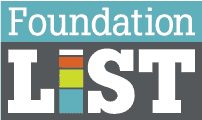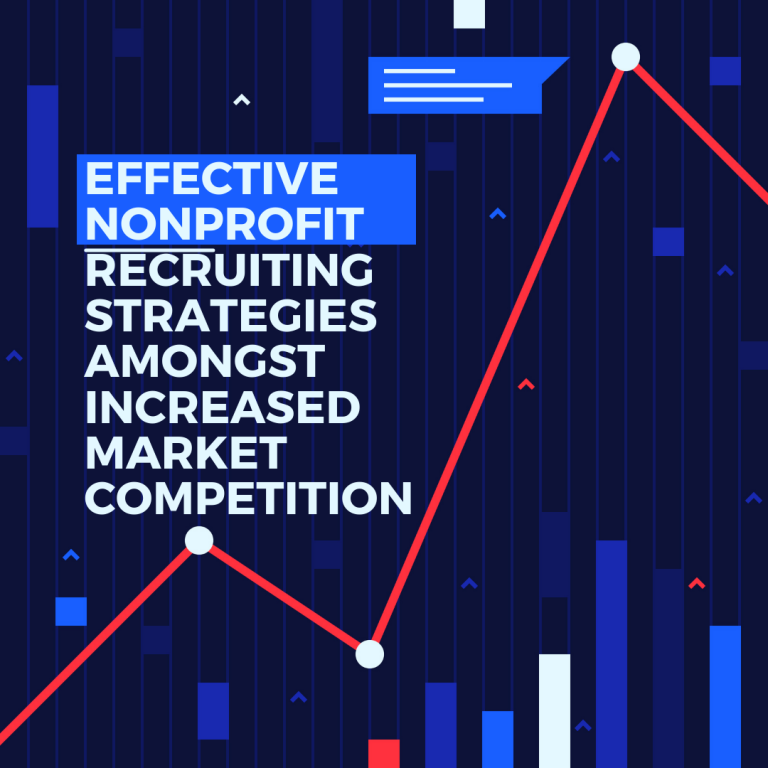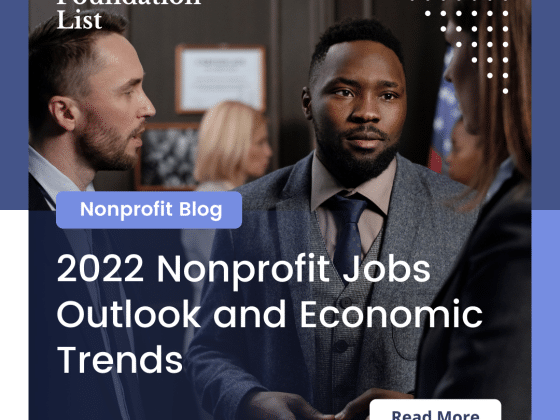The New Normal
Over the past three years nonprofit recruiting and how to reach a diverse pool of qualified and strong applicants has changed dramatically. Increased competition to hire competent staff, ballooning salary demand, inflation and a growing skills gap in the nonprofit and corporate sectors has rendered many traditional pathways to finding job applicants to be less effective.
The Impact of The Employment Skills Gap
Currently in the United States there are more jobs than job seekers. While this fact sounds positive, the United States and much of the world is also experienced a national and international skills shortage. What this means is even though there are so many open jobs in the United States, there are not enough qualified and experience candidates to fill these jobs. Not even close.
This limited supply of qualified skilled workers has driven competition to hold and retain workers long-term. Additionally, entry level jobs openings continue to decline across sectors for professional positions as most all jobs now seek skilled employees with prior experience with software, technology, or prior related work experience. Increased competition for talent has been placing pressures on employers to offer more competitive salaries, offer more remote flexibility, and find way to attract workers. Meanwhile, increased housing and education costs, and rising inflation continues to push candidates to seek the best possible wages to stay out of debt and provide for themselves. This phenomenon is actively occurring and compounding. Further, the increased competition to pay higher wages also places further stress on limited operating budgets and promotes inflation as well.
The History of Skills Gap
The skills gap has been actively reported and written about modernly and was recently made widely known after a 2019 report written by the Society on Human Resource Management. The impacts of this gap have had drastic effects on the supply and demand on experienced workers and had a limiting affect on the ease of attracting qualified candidates. SHRM cited the following main reason organizations struggle to find suitable candidates. “(1) Competition from other employers, (2) Candidates do not have the needed work experience, (3) Candidates do not have the right technical skills, (4) Low number of applications or lack of interest in the organization, (5) Salaries and benefits are not competitive for the market, and (6) Candidates do not have the right workplace (soft) skills.” Further, according to the World Economic Forum closing the skills gap could add 11.5 Trillion to the global GDP. Weforum.org has called for a Reskilling Revolution, “to provide better jobs, education and skills to 1 billion people in the next 10 years to contribute to future-proofing countries, companies and workers.” Covid-19 economic impacts have also made the skills gap even broader.
What You Can Do to Stay Competitive
While the skills gap continues to expand recruiting qualified candidates will continue to be challenging. If you take purposeful and strategic steps to continually improve your organization you can make your organization more attractive than other similar employers and a better place to work. This should be your goal. You have many options to empower your organization to be in the best possible position to recruit talent and retain your current staff. But please beware to stay competitive you may need to improve your culture, how you manage others, reevaluate your budget(s), change your priorities, and use your most attractive organizational attributes to recruit the best talent on the market. This may not be easy.
How To Recruit The Best
To recruit the best talent on the market you have to provide and cultivate an organization that is competitive at every level not just in compensation and benefit offering. To understand how to attain this you must first understand what job seekers and employees are seeking.
While priorities may vary slightly depending on the individual the majority of all job seekers are attracted to and are generally seeking the following long-term attributes in an current or prospective employer(s):
- Concreate career opportunities: a place to build their skills, and gain career experience that will help them attain their long-term career goals. An employer that will give the opportunity now and not later.
- A competitive salary for their location and work: above 65%+ of the median with room for growth. Keep in mind all salary surveys online are lagging indicators and are generally behind by 10% to 15% on average no matter the source.
- Room for growth: attractive annual raises and the potential to take on more responsibility at your organization and be promoted.
- Positive organizational culture: collaboration, positivity, and an organization where all voiced are heard and valued.
- Independence with mentorship: the ability to lead work on their own without being micromanaged and are mentored to be their best.
- Flexibility: the ability to work remotely and from more than one location as they need and work alternate schedules if needed.
- Recognition and gratitude: an employer that shows them gratitude, and public recognition.
- Purpose and a sense of belonging: A vision of where the company is going and how they fit in. Such as how their job and their work every day helps the organization and others. The ability to lead interesting work and help the organization evolve change and improve.
- A positive team: a feeling of being connected and working for a common goal as a team and being appreciated for their efforts.
- Diversity, equity and inclusion (DEI) values: the ability to bring their authentic self to work. Organizations with a strategic DEI plan, and that have a diverse staff outperform their peers and are much more attractive to new applicants.
- Transparency, honest, ethics and fairness: socially conscious management and business practices that are lived up to and promoted.
- Benefits and employee wellness: an employer that cares about their wellbeing and whole self.
Where To Start to Attract the Best – Add to Your Offerings
Educate your organization leadership on the market and challenges. Then ask yourself (and the organization as a whole) which of the areas above can we offer or increase? How well do you show these areas on our website or careers page? What are your selling points? How well do you explain each of these areas in your job postings and interview process? How else can you improve your internal team and working culture to keep all of your staff happy and effective. How can we showcase these areas in our active recruiting?
Review Your Hiring Process and Improve It
As the competitive market continues to drive up competition the organizations that work on themselves to have the most attractive and positive cultures will perform the best. While organizations unwilling to change, evolve and embrace tough conversions to improve continue to see growth and staffing challenges. You must evolve and move at the same speed as market forces.
Don’t forget about improving your job posting. Your nonprofit job posting should be the first place to showcase all of the positives about your organization and the position. Try not to write long and complex lists of requirements in your postings. Use the posting to describe the roll and what success looks like in it. Also showcase what experience and impact the position will provide. Keep it positive, exciting, concise and remove unnecessary requirements. Also do not use gender biased keywords in your job postings. For example, some words can inadvertently prevent individuals that identify as women from applying so avoid including words in your job descriptions such as “hacker,” “rockstar,” “superhero,” “guru,” and “ninja,” that can appear to be male biased and instead use gender neutral descriptive titles like “experienced,” “talented,” or “expert.”
Then look at your work culture, work flexibility, and how it operates. Make sure your organization and hiring process is as positive, cutting edge, and attractive as possible to be able to stay relevant amongst the increasing talent shortage and increasing skills gap.
In the end, organizations that are willing to offer competitive salaries and invest in hiring qualified and skilled talent grow faster and are more successful. Do not allow your organization to fall into the trap of saving funds in the short term which can have profound negative effects long-term in your success. It may take a visionary to implement all of the above tactics to make your organization as attractive as possible for recruiting – but to do otherwise limits organizational potential, and mission impact. Start today to build a strong future for tomorrow.




